DTF Printer
DTF (Direct-to-Film) printers have taken the garment customization world by storm. DTF technology allows you to easily transfer rich and vibrant, yet durable, designs to a wide range of fabrics with Direct-to-Film technology. It doesn't matter if the apparel is for retail, event, or personal use; a DTF machine can deliver the versatility and print quality needed to bring your projects to life. But why is DTF so hot right now, and is it right for your business?
Google Trends data demonstrates that since early 2022, the number of searches for DTF printers for sale has continuously increased and, by the end of 2023, has ultimately sourced more interest than DTG (direct-to-garment) printers. In just a short time frame, direct-to-film printing has gone from a specialized device to the hottest new technology for the apparel decoration industry. If you are involved in T-shirt printing, branded merchandise, or any other field of garment customization, now may be a great time for you to check out the offerings of a Direct to Film Transfer Printer.

What Is a DTF Printer
A Direct-to-Film printer is a special inkjet printer for DTF transfers that allows you to print in full color on a film, which is then transferred onto fabric using heat and pressure. It is easy: create your art, print your design onto specially formulated PET film, add powder adhesive, and heat press onto your shirt. It doesn’t matter whether you are a hobbyist or a print shop, a DTF T-shirt printer presents an efficient and versatile way to create vibrant, long-lasting designs on various fabrics.
When comparing DTF printing against sublimation (which only works on polyester or light color substrates) or heat transfer vinyl (cut and layer), the beauty of DTF printing is that it can be transferred onto more varieties of fabric—cotton, polyester, blends, and even dark fabrics—giving you more versatility and colorful results with less prep time.

DTF Printing vs. Other Methods
This table provides a quick side-by-side contrast of DTF printing, DTG printing, and screen printing in terms of most critical factors such as compatibility with fabric, cost of setup, print resolution, speed, durability, and ideal applications.
|
Feature |
DTF Printing |
DTG Printing |
Screen Printing |
|
Fabric Compatibility |
Most fabrics (cotton, polyester, blends) |
Mostly cotton |
Most, but prep needed |
|
Setup Cost |
Moderate |
High |
Moderate to High |
|
Print Detail |
High |
Very High |
Moderate |
|
Speed (Small Orders) |
Fast |
Slow (pretreatment) |
Slow (setup required) |
|
Durability |
Very durable |
Moderate |
High |
|
Best For |
Custom & bulk orders |
Photographic designs |
Bulk, simple designs |
It shows that DTF printing has excellent fabric compatibility, fast production for small orders, and excellent durability, and hence is the ideal one for both bulk and custom work. DTG produces detailed, photo-quality prints but takes more time and is limited to cotton, whereas screen printing is ideal for high-volume plain designs but takes more time and effort to set up.
Why Users Are Turning to DTF Transfer Printer
Material Compatibility
One of the most frequent reasons why users jump to DTF transfer printer is the unparalleled versatility they offer. Custom T-shirts, hoodies, and even accessories can all be created by using these printers to provide high-resolution and colors on any fabric.
Superior Print Quality and Durability
Direct-to-Film printers are manufactured to produce high-quality images utilizing a great deal of detail and vibrancy of color. The durability of DTF printing is another advantage, as the prints will not fade or crack after multi-wash cycles.
Cost-Effective for All Businesses, Small and Large
DTF transfer printer also offers cost savings to businesses. For Small to medium businesses looking to expand without spending a fortune, DTF machines provides an excellent entry into quality printing.
Fast Turnaround: Engaging your productivity
Every custom apparel business needs to expedite its production cycles. Direct to Film Transfer Printer helps to make this happen by allowing you to produce custom apparel quicker by orders of magnitude than previously possible. The streamlined workflow—from printing the design on film to the heat transfer process—means less time waiting and more time generating revenue.
DTF Machine Size for Sale
DTF machines are available in sizes A1, A3, and A4. Below is an InkSonic DTF machine model representation of the printing widths corresponding to each size:
|
Printer Size |
InkSonic DTF Machine Models |
Maximum Film Width |
|
A1 |
To be developed |
60cm |
|
A3 |
XP600 U13; R1390 C13; L1800 E13; L18058 L13 |
32cm |
|
A4 |
L8058 L8 |
22cm |
If you are looking to print larger designs- T-shirts, tote bags, or banners, for example, a larger size A3 printer is recommended. However, if you would like to start to enter the print business or you have limited room, an A4 printer is a great option to start into the print business.

Getting Started with a Direct-to-Film Printer
If you’re a business wanting to adopt DTF printing technology, it might be a little overwhelming at first, but with the right preparation and planning, you will reap the rewards sooner rather than later!
Research and Compare
Take time to check out as many Direct-to-Film Printer models as you can and to compare their features, prices, and reviews. Be wary of manufacturers that only sell "turnkey" printers. You are going to want to choose a Direct-to-Film that will allow you to scale your production, has easy-to-use software, and strong customer support.
Know Your Production Needs
Evaluate your current production levels. Assess your expected future production rates. Choose a DTF transfer printer machine which will be able to handle your current workload. If you anticipate increasing your business very quickly after purchasing a DTF transfer printing machine, you should choose a printer that prints more to avoid bottlenecks and to stay ahead of possible ceilings on production.
Budget for Supplies and Maintenance
Include budget costs for supplies, including ink, adhesive powders, and films. In addition, budget for regular maintenance so that your Direct-to-Film printer is working at its best.
Invest in Training and Support
Even if you are quite tech-savvy, it is always a good idea to purchase training for you and your employees. Most manufacturers offer training and detailed maintenance information so you can get the most use out of the Direct-to-Film printer for the longest time. The more trained and knowledgeable your crew is about how to operate the equipment, the better the production processes will be.
Choosing the Right Direct-to-Film Printer
You have now gained a preliminary understanding of Direct-to-Film Printers. If you are looking to upgrade to high-quality DTF printers for clothing, I would suggest a brand that is cost effective and performs well - InkSonic.
Why Can Trust InkSonic?
1. Versatile and cost-effective
Each of our printer models not only guarantees high performance but also has very powerful and convenient functions(as below), but the price range is about US$2,000-3,000. It can be said that no other DTF transfer printer on the market has the same cost-effectiveness as ours.
-
3-in-1 White Ink Circulation
-
2-in-1 Automatic Cleaning System
-
Air Suction Smooth Film Loading System
-
2 Convertible Film Modes Sheet
2. Offer customers various model options
The InkSonic DTF printer models C, E, U, and L are designed to meet different business needs, representing economical efficiency, high efficiency, user-friendliness, and portability, respectively.
3. Reliable Brand and Support
Inksonic as a top brand provides 24/7 customer service & 12/7 technical support. Whenever you need assistance, you can email us: support@inksonic.com
Fast & Reliable Printing Solutions With Local U.S. Warehouses
When investing in a professional printing machine, one of the biggest concerns buyers face is long shipping times and high import fees from overseas suppliers. InkSonic solves this problem by stocking printers directly in our U.S. warehouses, located in California (CA) and New Jersey (NJ). That means no more waiting weeks for international delivery, no more surprise customs costs, and no more uncertainty about when your equipment will arrive.
With local distribution, you’ll enjoy:
-
Fast Delivery – Get your machine in just a few days instead of weeks.
-
Lower Shipping Costs – Domestic freight saves you money compared to overseas imports.
-
Reliable Inventory – Easy access to resupply films, inks, and parts without long delays.
-
Hassle-Free Setup – Start your printing journey quickly with everything you need delivered straight from U.S. soil.
By choosing InkSonic, you’re not only getting a high-performance machine—you’re also gaining the confidence of knowing your purchase is backed by local support, faster shipping, and a smooth setup experience. Whether you’re on the East Coast or West Coast, our NJ and CA warehouses make sure your business gets the tools it needs without delays.
Best DTF Model for Beginners
The InkSonic U13 is a powerful and high quality printer designed for high-quality apparel printing. With a 13" (330 mm) print width and XP600 single print head, it delivers crisp, vibrant results at an impressive resolution of 720 x 2880 DPI. The U13 supports five-color printing—CMYK plus white (WW). In addition to the regular colors, the U13 is also available in 5 stylish body colors, including pink, and uniquely features a stylish body that stands out in any workspace.

Quality, Sustainability & Cost-Efficiency in Every Print
Every InkSonic DTF Machine is built around one guiding purpose — professional-caliber results without too much waste or high operating cost. Every print you produce exhibits crisp definition, high color density, and wash- and wear-resistant hardness that can withstand repeated washing and regular use. But performance is only half the equation.
When contrasted with more traditional methods like screen printing or sublimation, DTF printing machine reduces waste and material usage by a lot. No more dirty emulsions, vinyl cuts, and water-based pre-treatments. InkSonic dtf transfers printer employ exact ink deposition and powder bonding, limiting chemical exposure and saving resources per project. It's an eco-friendly process that makes it easier for creators and small businesses to enjoy a cleaner, safer, and greener production space.
From the commercial view point, DTF printing keeps your costs lean and your margins tight. Because the process uses less ink and fewer supplies and takes a number of setup steps out of the process, every design prints pennies instead of dollars to produce. The cost benefit is compounded with volume — the more you print, the higher your unit profit. And with automated features such as continuous ink circulation and film feeding, you can print quickly even during long run lengths.
Overcoming Common Challenges
Each emerging technology has its own problems. Here are some typical issues that companies may experience while adapting to Direct-to-Film printers technology—and how to resolve them:
Initial Learning Curve
Like any new piece of technology, a DTF printer for shirts has some learning curve to overcome in the beginning. Do not forget to use all available training resources, and reach out to the manufacturer's technical support for assistance if you find you are struggling with problems. With time and practice, this printer will become second nature.
Managing Production Costs
Although DTF printers are more affordable in the long run, there may still be a considerable investment in setup and supplies. Keep a close watch on production costs, and adjust your pricing in order to better reflect your new costs and approach. It is best to clearly explain to your customers, the quality of the goods and the 'unlike, or superiority' of your goods may justify that slight increase in pricing.
Quality Control
It is essential that you maintain uniform print quality. Have a quality control process that includes regular calibration of your printer, frequent maintenance, and careful inspection of the final products. Your own quality control system will help you detect any issues early and to have high standards which your customers have learned to accept.
Start Your DTF Printing Journey with Confidence
Direct-to-Film printing represents the next evolution in custom apparel production—combining color precision, material versatility, and business profitability in one compact machine. With InkSonic, you’re not only investing in advanced printing technology but also in a long-term partner dedicated to helping your business grow.
Whether you’re launching your first print shop or upgrading to a more efficient system, our desktop DTF printers are designed to deliver dependable performance, low operating costs, and eye-catching results. Explore our full range of InkSonic DTF printers today and discover how simple it can be to turn creative ideas into real, profitable products.
Browse our DTF printer models or contact us for expert guidance.
FAQs
Q1: What exactly is a DTF printer?
A DTF (Direct-to-Film) printer lets you print full-color designs onto a special PET film which is then transferred to fabric using adhesive powder and heat. It offers versatility across many fabrics—cotton, polyester, blends—and both light and dark colors.
Q2: Can I print DTF on my normal home or office printer?
No. Standard style inkjet printers (especially thermal-head printers) are not designed to handle DTF inks, the circulation of white ink, the feed of film, or the adhesive powder processes. It is always better to invest in a DTF dedicated machine, both for reliability and print quality, and usually for better support.
Q3: How do I choose the right DTF printer size or model?
Consider these factors:
-
Print width (A3, A4 or larger) based on your garment size and volume.
-
Printhead type (speed, resolution).
-
White ink system and film feeding mechanism.
-
Your current production level and future growth.
At InkSonic, we offer models designed for beginners as well as full-production setups.
Q4: What additional equipment or supplies do I need beyond the printer?
Besides the printer, you’ll need:
-
PET transfer film (sheets or rolls)
-
DTF adhesive powder
-
A curing/drying system or powder shaker
-
A heat press (for transferring the film design to fabric)
-
DTF-specific pigment inks (including white ink)
All these items are available in our DTF supplies section.
Q5: How do the different InkSonic models (C, E, U, L series) differ?
-
Model C: Cost-effective, great for smaller operations
-
Model E: Higher speed, suited for growing businesses
-
Model U: User-friendly, professional-level output
-
Model L: Compact, ideal for startups or limited space
Each is optimized for DTF printing with features like white ink circulation, film loading systems and full support.
Q6: Will I get technical support and warranty for my DTF printer?
Yes, Buying an InkSonic DTF printer gives you direct access to our support team, warranty service, and installation/training materials. Our goal is to support your getting going as quickly as possible and ensure best performance as long as possible.
Q7: How does DTF printing compare to other printing methods like DTG and screen printing?
DTF excels in its applicability across various fabric accounts (light/dark, cotton/poly blends), reduced setup cost, quicker turnaround and overall durability. In comparison to DTG (generally for cotton only) and screen printing (having high initial setup costs on smaller runs), DTF can be the more economical, flexible option in most situations.
DTF Printer Model
/
Features
Cost per T-shirt
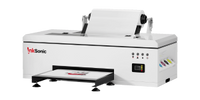
(730*300mm)
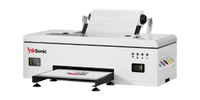
(730*300mm)
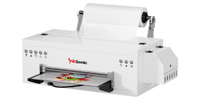
(730*300mm)

(730*300mm)
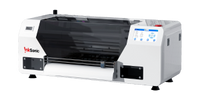
(650*340mm)
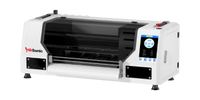
(650*340mm)
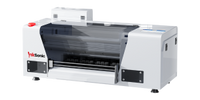
(730*300mm)
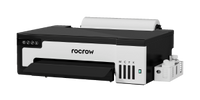
(530*380mm)
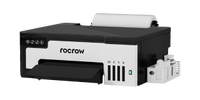
(405*360mm)





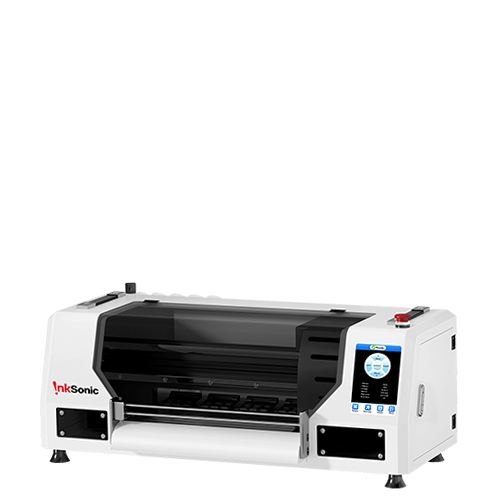










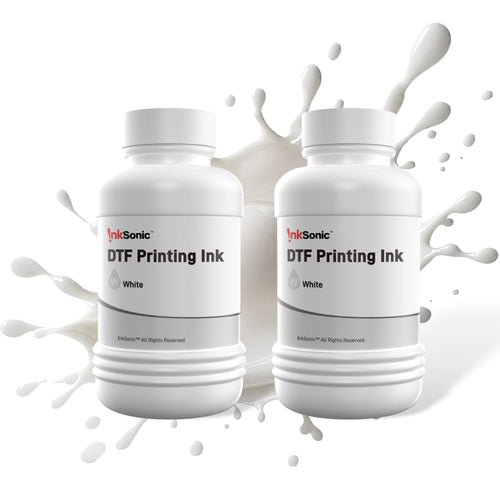




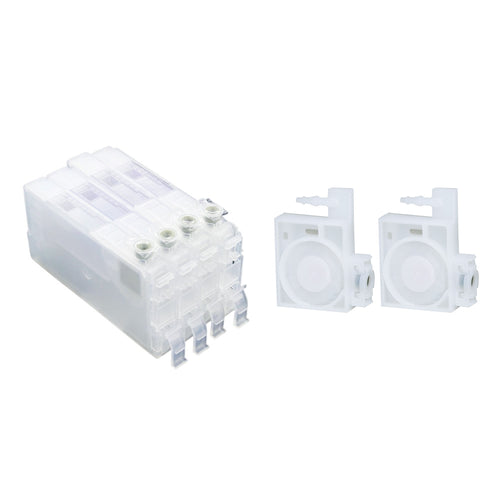























![XP600 A3+ DTF Printer U13Yellow [Pre-order]](http://www.inksonic.com/cdn/shop/files/U13-3_df8d5b2a-0c8c-43b8-afb9-555883a82b7a.jpg?crop=center&height=20&v=1756865791&width=20)
![XP600 A3+ DTF Printer U13Yellow [Pre-order]](http://www.inksonic.com/cdn/shop/files/u13ye.png?crop=center&height=20&v=1756865791&width=20)



